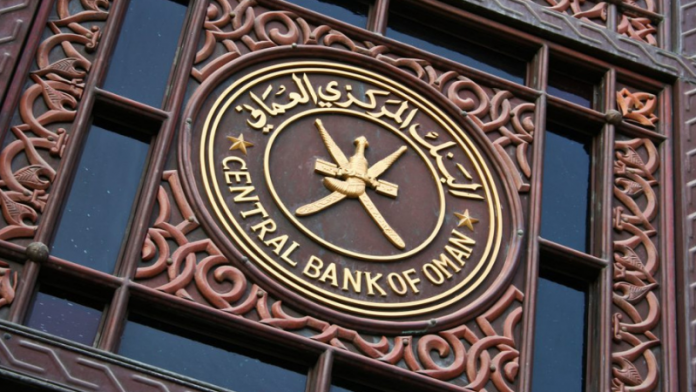Muscat: Statistics revealed by the Central Bank of Oman show the monetary developments indicated in Oman in September 2020.
Data issued by the Central Bank of Oman (CBO) indicated that the total deposits held with Other Depository Corporations (ODC) reached RO24.3 billion at the end of September 2020, increasing by 5 per cent from September 2019.
Notably, total private sector deposits increased by 9.5 per cent to RO16.4 billion by the end of September 2020.
The monthly statistical bulletin issued by CBO indicated that Oman’s nominal GDP declined by 13.4 perc ent during the second quarter of 2020 compared to the same period of last year, according to preliminary data released by National Center for Statistics and Information (NCSI).
The nominal contraction in the economy was driven by a 20 per cent decline in the hydrocarbon sector, as well as a decline in the non-hydrocarbon sector by 9.9 per cent during the second quarter of 2020.
The Omani oil price averaged US$47.2 per barrel during the first nine months of 2020, which is lower by 26.8 per cent over the corresponding period of last year.
Moreover, the average daily oil production decreased by 1.8 per cent to 952,900 barrels during this period. According to the latest data released by the NCSI, the Sultanate’s Consumer Price Index (CPI) witnessed a year-on-year (Y-o-Y) negative growth of -0.7 per cent during Jan-Sep 2020.
Conventional and Islamic Banks
The combined activities of conventional and Islamic banks provide a comprehensive picture of financial intermediation through the banking sector in Oman. The total outstanding credit extended by ODCs grew by 2.1 per cent to RO26.4 billion by the end of September 2020.
Credit to the private sector rose by 0.3 percent Y-o-Y to RO22.8 billion. Of the total credit to the private sector, the non-financial corporate sector and the household sector (mainly under personal loans) received a share of 46.3 per cent and 45.1 per cent respectively while financial corporations received 5.1 per cent and other sectors the remaining 3.5 per cent.
When looking at a sector-wise analysis of private sector deposits; the share of households was largest at 51.2 per cent, followed by non-financial corporations at 31.7 per cent, financial corporations at 14.5 per cent, and other sectors at 2.6 per cent.
The combined balance sheet of conventional banks indicates a Y-o-Y growth of 1.3 per cent in total outstanding credit at the end of September 2020. Conventional banks’ credit to the private sector decreased marginally by 1.1 per cent to RO18.7 billion.
Conventional banks’ overall investments in securities amounted to RO4 billion. Investment in Government Development Bonds increased by 19.5 per cent over the year to RO1.8 billion.
Banks also invested RO306.8 million in Government Treasury Bills while their investments in foreign securities stood at RO1 billion at the end of September 2020. Aggregate deposits held with conventional banks increased to RO20.5 billion in September 2020, registering a growth of 4.5 per cent over the level a year ago.
Government deposits with conventional banks decreased by 13.8 per cent to RO4.6 billion, while deposits of public enterprises increased by 20.1 per cent to RO1.3 billion. Private sector deposits, which accounted for 70 per cent of total deposits with conventional banks, increased by 10.2 per cent to RO 14.1billion.
Islamic banking entities provided financing of RO4.2 billion by the end of September 2020, recording a growth of 6.7 per cent over that a year ago. Total deposits held with Islamic banks and windows increased by 7.7 per cent to RO3.7 billion.
The total assets of Islamic Banks and Windows increased to RO5 billion and constituted about 14 per cent of the banking system’s assets by the end of September 2020.
Monetary aggregates data indicates narrow money (M1) at the end of September 2020 increased by 13.4 per cent to RO 5.7 billion on a Y-o-Y basis. Likewise, quasi-money (Rial Omani saving and time deposits, certificates of deposit issued by banks, margin deposits, and foreign currency denominated deposits) registered a significant increase of 10 per cent during this period.
Broad money supply M2 (M1 plus quasi-money) grew by 11 per cent and increased to RO19.3 billion.
The weighted average interest rate on RO deposits decreased marginally from 1.987 per cent in September 2019 to 1.916 per cent in September 2020, and the weighted average RO lending rate increased from 5.463 per cent to 5.481 per cent during the same period.
Meanwhile, the overnight Omani Rial domestic inter-bank lending rate fell significantly to 0.780 per cent in September 2020 from 2.675 per cent a year ago. The average Repos rate for liquidity injection by the CBO also stood lower at 0.5 per cent during September 2020 in comparison with 2.554 per cent in September 2019.






